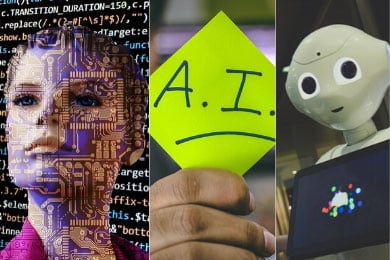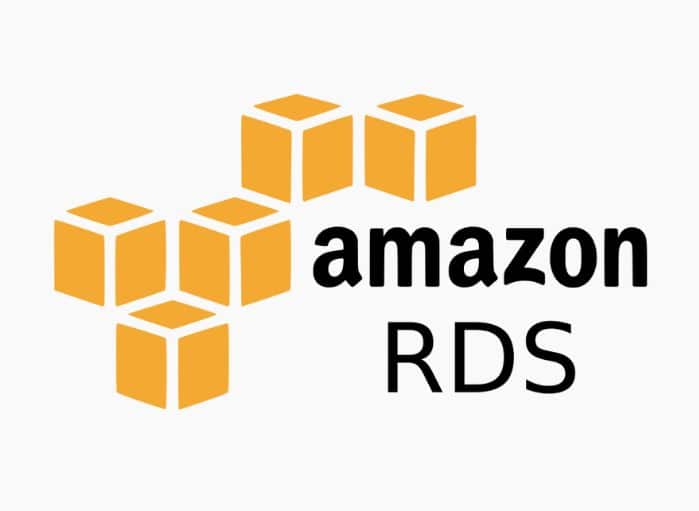
Future of AI Shows Promise for Early Wildfire Detection: Some Thoughts
Tags: AI,Future Tech,Machine Learning
eWay Corp February 5, 2020 2 MIN READ

In recent times, Australia has experienced unbelievable destruction from bushfires. The unprecedented incident compelled many to think whether our technological tools are equipped to assuage the problem. Many experts are looking at the future of AI for a possible solution to this issue. Let’s find out how and when AI can be of help to prevent such catastrophes.
How wildfire is normally mapped?
In recent years, drastic change in climatic patterns has intensified the wildfires throughout the world. Predictive mapping has been an important tool to identify at-risk forest zones that are susceptible to wildfire/bushfires. The system analyzes images that the human eye normally misses.
But with the future of automation revolutionizing things, artificial intelligence can be used to determine and respond to fires quickly. Before that, you need to collect the data about the location in hand.
What’s wrong with the existing wildfire management system?
In order to detect the breakout of wildfire, satellites take frequent images of the Earth quite a few times. Despite having such a system in place, most of the fires are either reported by people or local agencies from ground zero.
The manual containment efforts are far from efficient and are not enough to manage a chaotic wildfire. In most countries, there are local agencies that help to analyze and interpret the satellite footage of fires. It helps to chalk out the perimeter and respond accordingly.
Some of the things that are analyzed are geographical features, digital terrain, and elevation data. The entire procedure is time-consuming and exhausting and inconsequentially ineffective in the face of calamity. Often before the perimeter is estimated, the wildfire had managed to spread and cause damage.
How will the future of AI impact the process?
According to experts, the future of artificial intelligence is going to revolutionize a lot of things including the way we map wildfire. New software needs to be introduced which will offer longitude and latitude coordinates for precise mapping. This will immediately trigger a faster response.
The origin of fire will be easily detected by looking at satellite images. This will be more helpful during the night when certain impairments can cause the delay. But with exact mapping, it will be easier to arrest the fire on time.
AI machine learning will be so advanced in the next few years that algorithms will pinpoint the precise location of the catastrophe. The data analysis will be based on the different properties of the fire.
The mechanism which will help in precise detection involves information on past image/data of the place without fire. The past image will be then compared to the present to identify the intensity of wildfire. Another way to locate the area and intensity is by doing a comparison of temperature.
Future of AI technology and early detection of wildfire
The future of AI will impact a lot of things including the way data is collected for wildfire detection. All crucial data required for bushfire prevention will come from different sources like sensors powered by IoT. These sensors will collect archived data from previous years, weather data, satellite images, information from modeling and different social media tools.
With the advent of artificial intelligence, mapping wildfire will be easier. The idea of AI is to merge all technologies to predict the likelihood of an event. A detailed analysis like this ensures accurate information, the speed with which information is collected and the location of the event.
The targeted information acquired in a timely manner becomes a great help for the rescue workers. Once this technology is integrated into the existing system, a wildfire can be detected without losing precious time.
Future of AI in 2020 and the mesh networks
Another prominent feature related to the future of AI is the mesh network. It is an emerging technology powered by the combination of artificial intelligence, augmented reality, IoT sensors and 5G. Unlike an old network, the mesh network will be connected to every 5G-enabled smartphone.
When a bushfire or wildfire starts to spread, people in that area can use this technology from their smartphones to alert people. They can create narrative reports, make 360-degree videos, take close-up photos and distribute them through this network.
Even photogrammetric AI is capable of producing important information about the physical environments via captured images. The videos can be easily integrated to make live holograms. Getting help from virtual reality will allow everyone to understand the dangers in ground zero. It also helps the rescue workers to coordinate relief efforts in an organized manner.
Future of AI and use of drones
Even drones and helicopters can help to gain accurate information. During the time when a wildfire broke out in Australia, there was news about a Danish startup known as Robotto. They developed an autonomous drone; this handheld device will be regulated by an operator. Once the drone finds the fire, it will gather data and transmit the images immediately via the 5G network.
The drone devised by Robotto will have the same functionality as a plane, but it will fly higher than commercially operated drones. Although this is a battery-operated device, it will allow the drone to fly for about 2 ½ hours.
Drones have been previously used in Australia for other purposes. But this is the first time when drones will be used for detecting wildfire to eliminate the possibility of a bushfire crisis.
Deep learning & AI can change the way we think about wildfires
Turning to deep learning techniques, researchers have noticed that in order to find accurate information, they need to rely on different variables. By integrating the different variables like fire data, weather reports, and burned area information, it is possible to identify bushfire hotspots in Australia.
They have developed a map that was divided into various climatic zones. When the ensemble model was validated, it was noted that the estimation accuracy was of the report was 91%. Additionally, they also understood that bushfire frequency can be determined by looking at weekly trends in dry fuel, wind speed, solar irradiation, and soil moisture.
Looking into the future
There are many organizations that have come up with ingenious ideas about fighting wildfire. One of them is WIFIRE, designed by computer scientist Ilkay Altinas and her team at the University of California in San Diego.
This cyber-infrastructure system is known to predict the path of wildfire in real-time. Predicting the wildfire’s movements is one of the challenges. Knowledge of fuel sources in its path helps to estimate the extent of the damage.
WIFIRE uses high-resolution satellite imagery to understand the combustion capacity of the vegetative surroundings. This information is then incorporated into predictive mapping. Other factors like precipitation and wind can also affect the fire. Those factors are taken into consideration for the imagery.
It’s time to bring a change in the way we visualize and do things. It has often been said that innovation is the key to sustainable living. It’s not easy to adopt the various facets of technology; it’s gradual progress. The future of AI in 2020 will be largely dependent on the way we adopt new technology. Before we venture on new things, we must begin with basics like cloud migration.
Those who are looking for a reliable partner for AWS cloud migration can look at the various services offered by eWay Corp. We are known for our AWS migration capacities in Iowa. As a trusted AWS partner, we follow a simple procedure:
1. Evaluate
We start by working with you to properly assess your company’s specific needs.
2. Plan:
Our team of engineers immediately begins the architecture of a custom AWS foundation your data will be calling its new, secure home.
3. Design
With careful monitoring and our thorough planning process, we eliminate disruption during the migration process by designing a seamless process.
4. Migrate
The migration is performed under the ideal conditions to ensure optimal usage of resources.
5. Optimize
Once the migration is complete, we continue to maintain the cloud with regular updates and security monitoring.
Contact us to know more about the cloud migration process. We will be more than happy to help!



